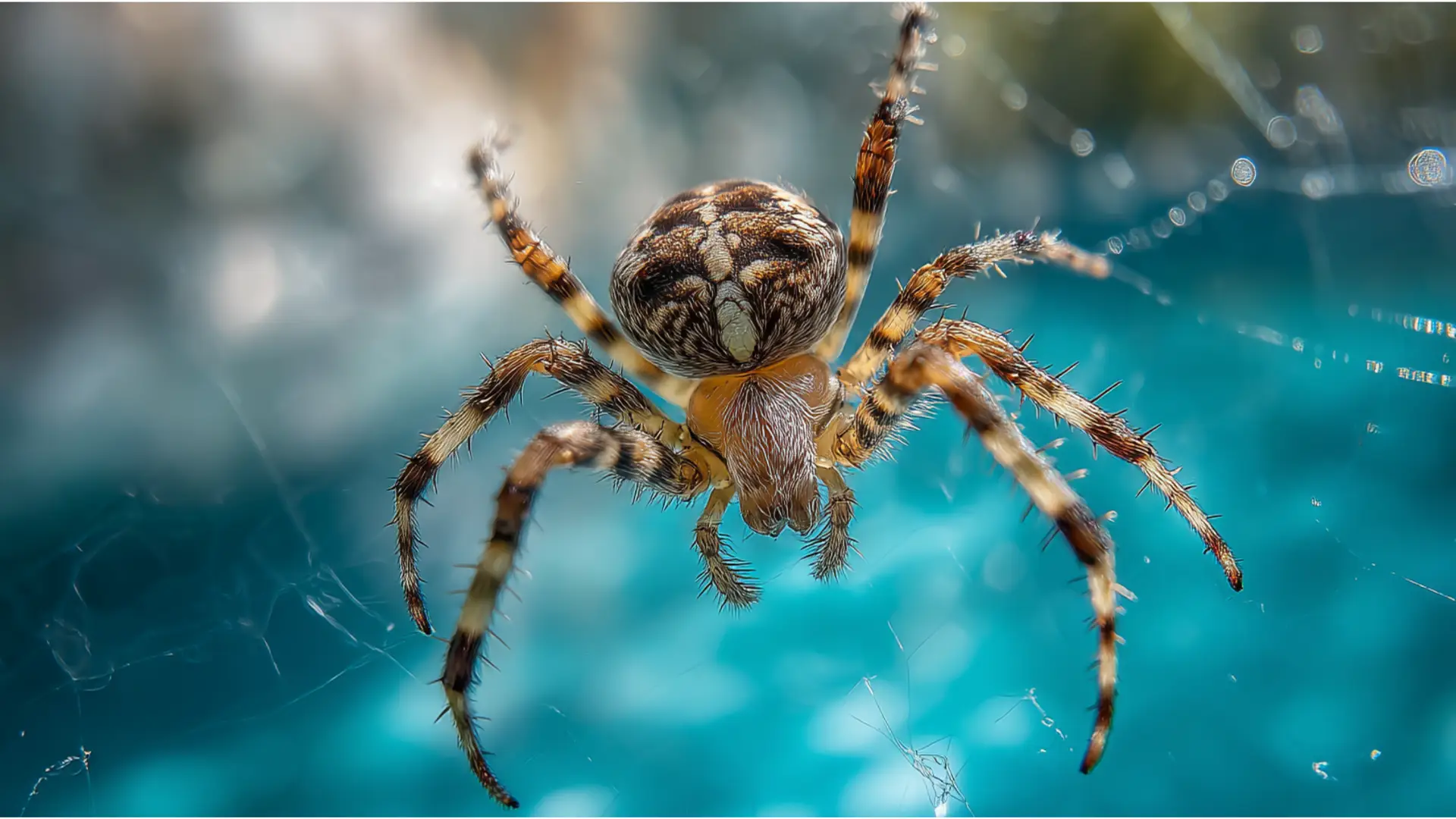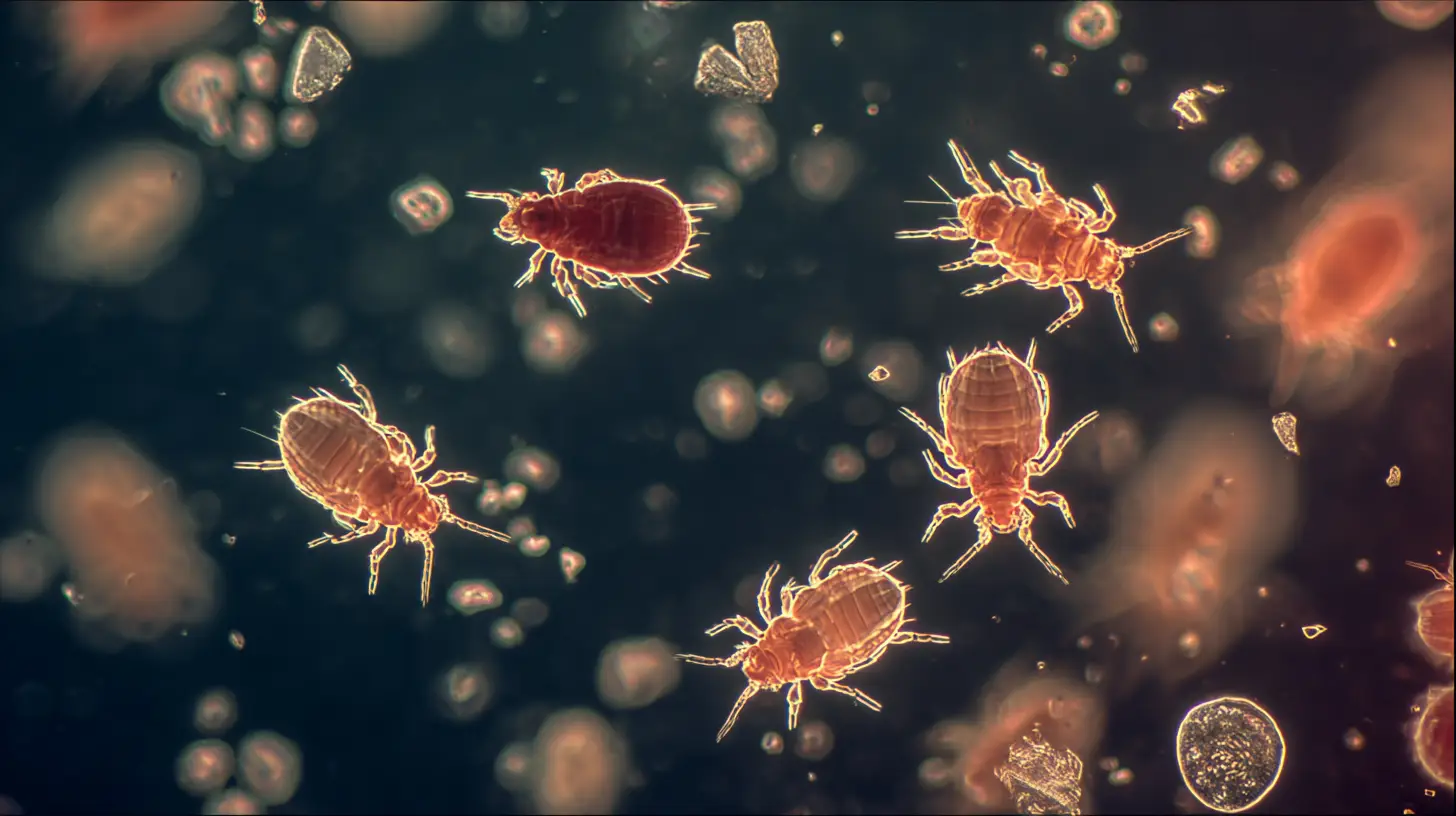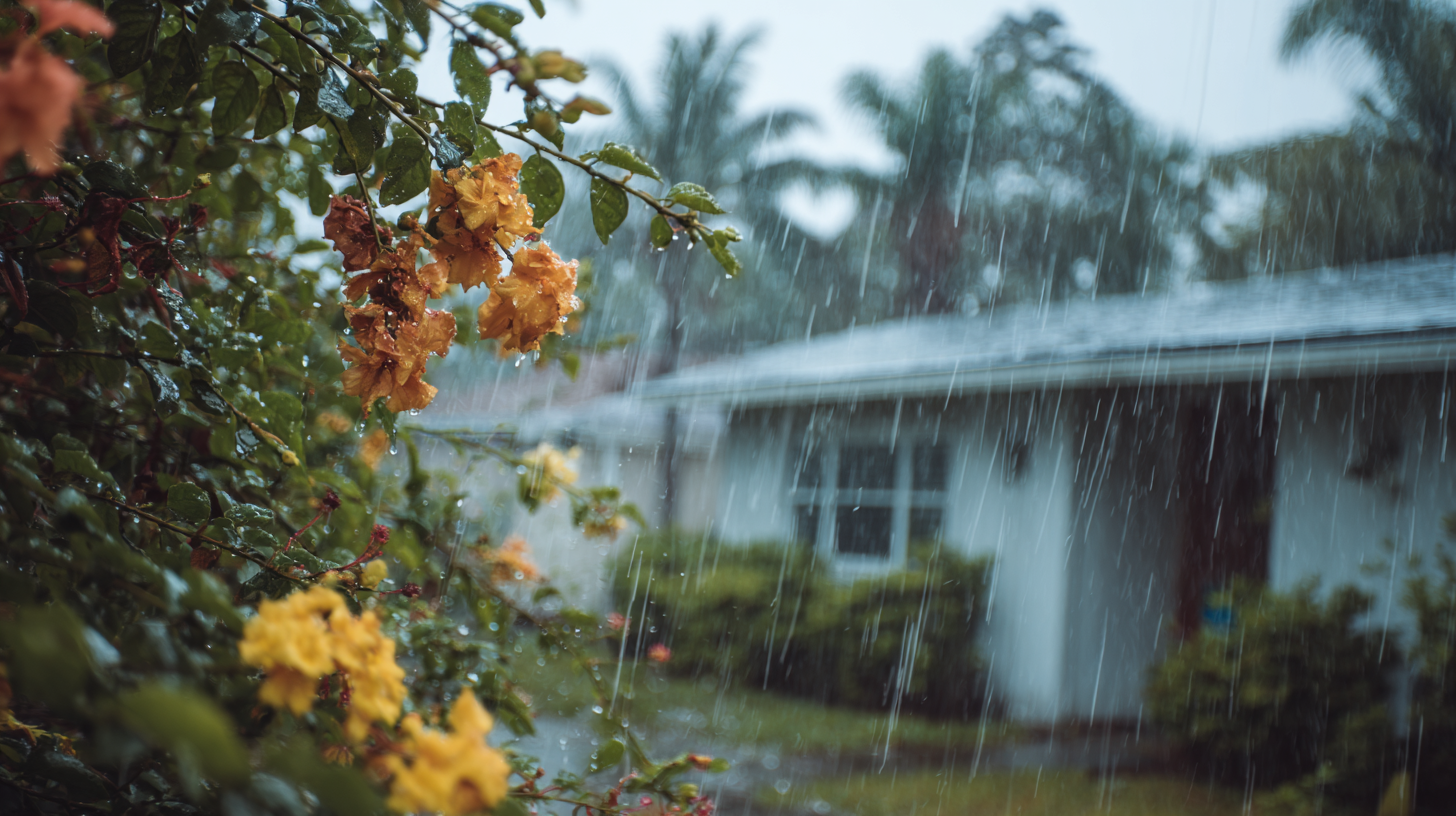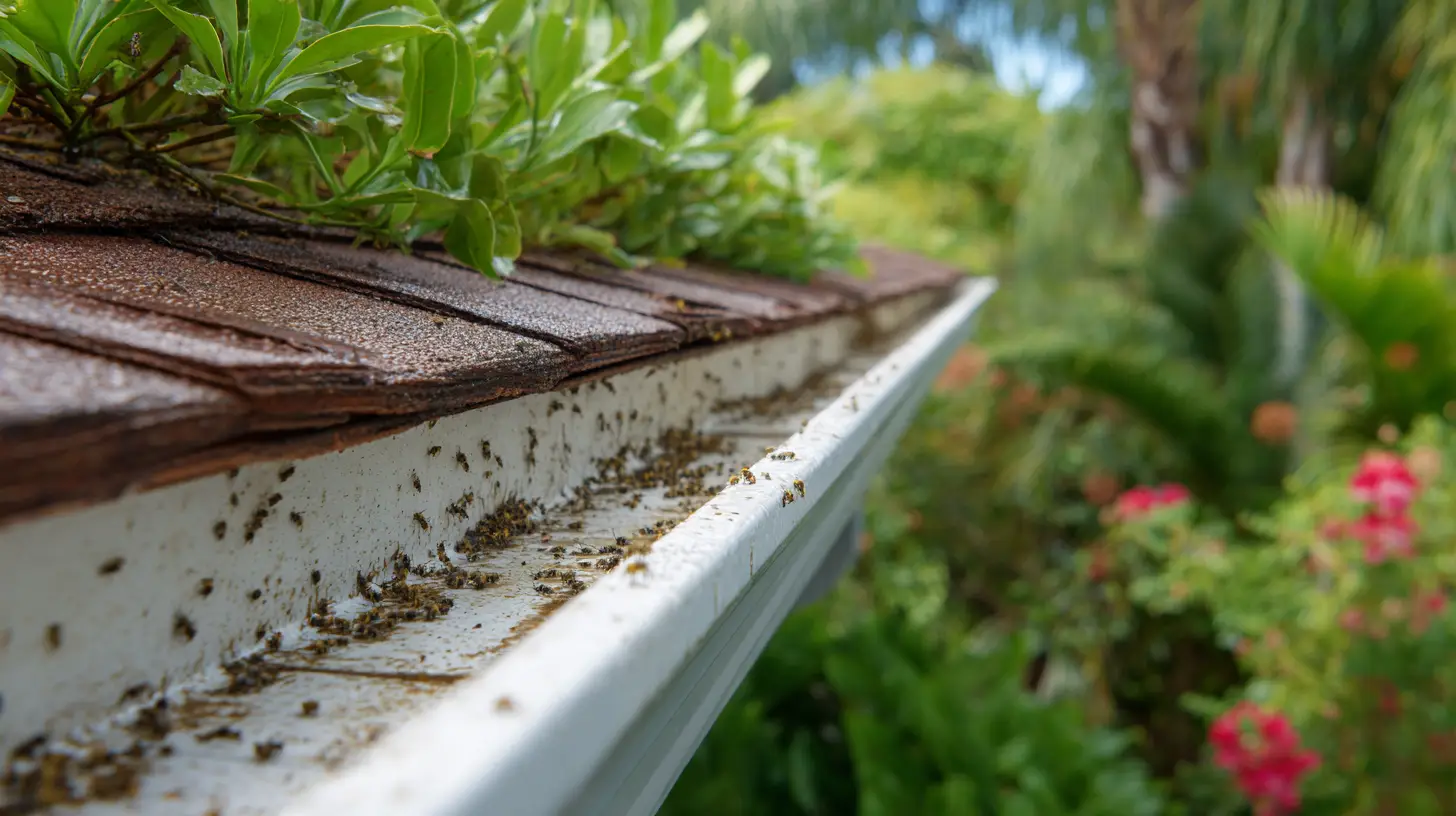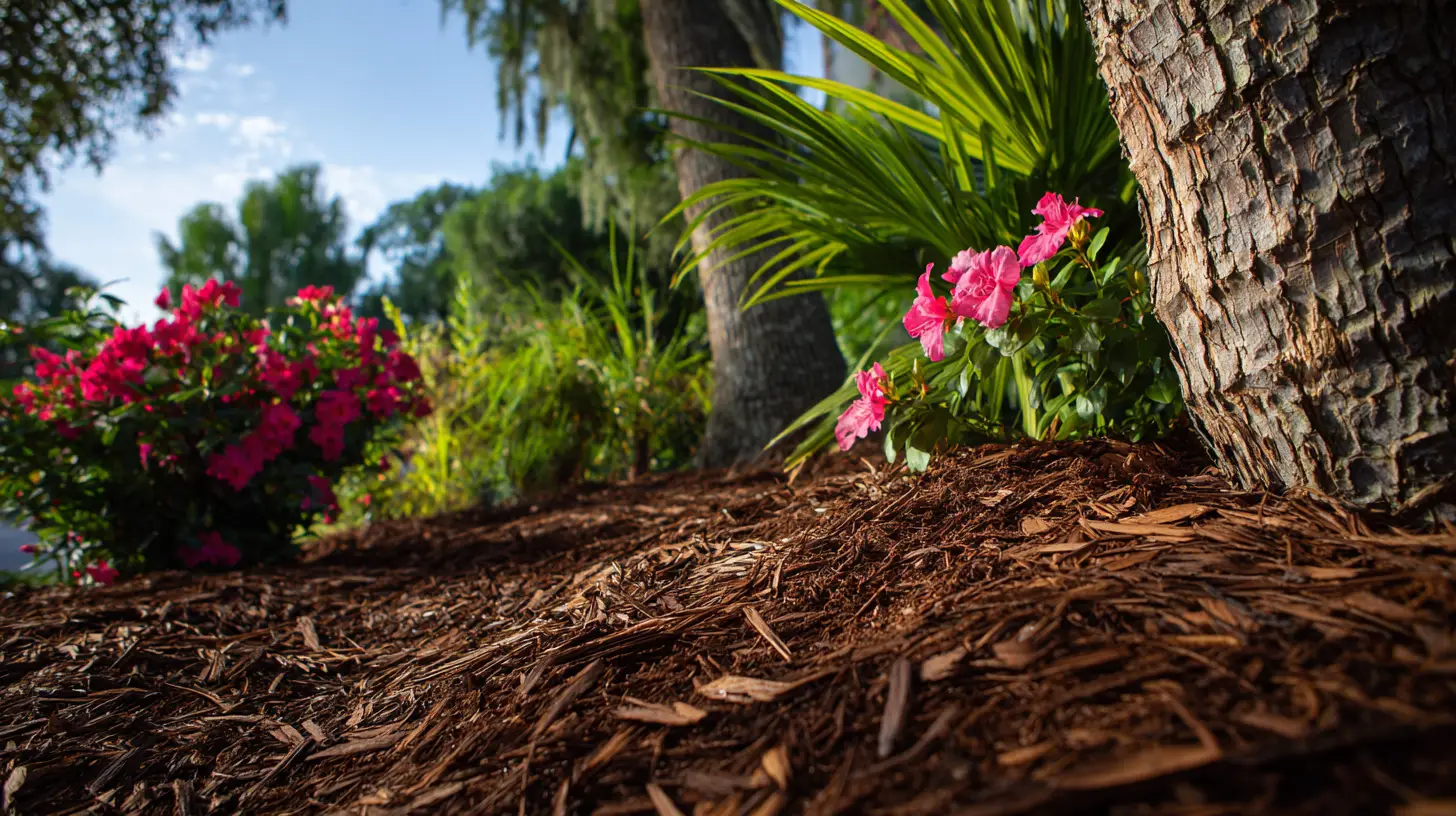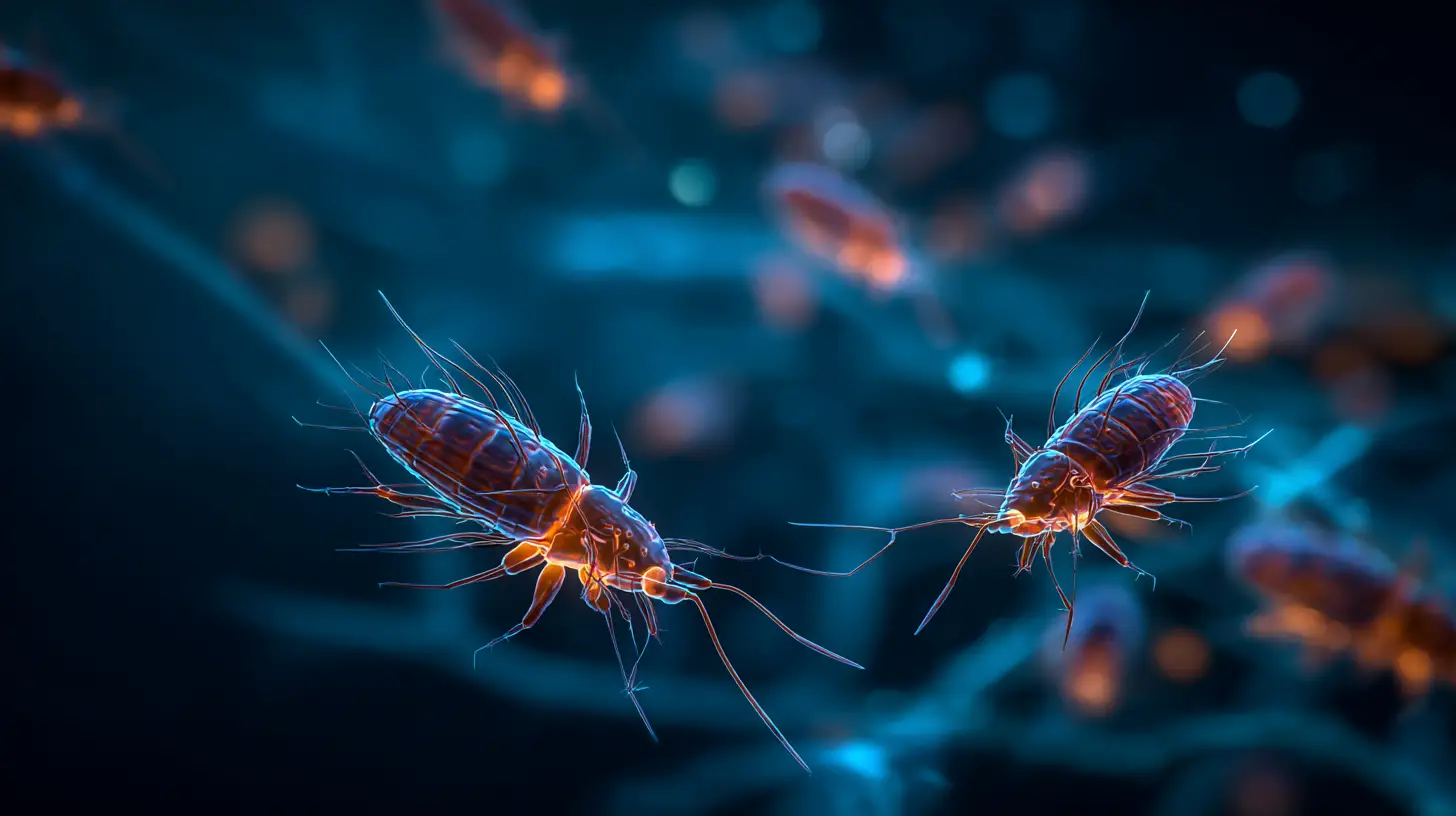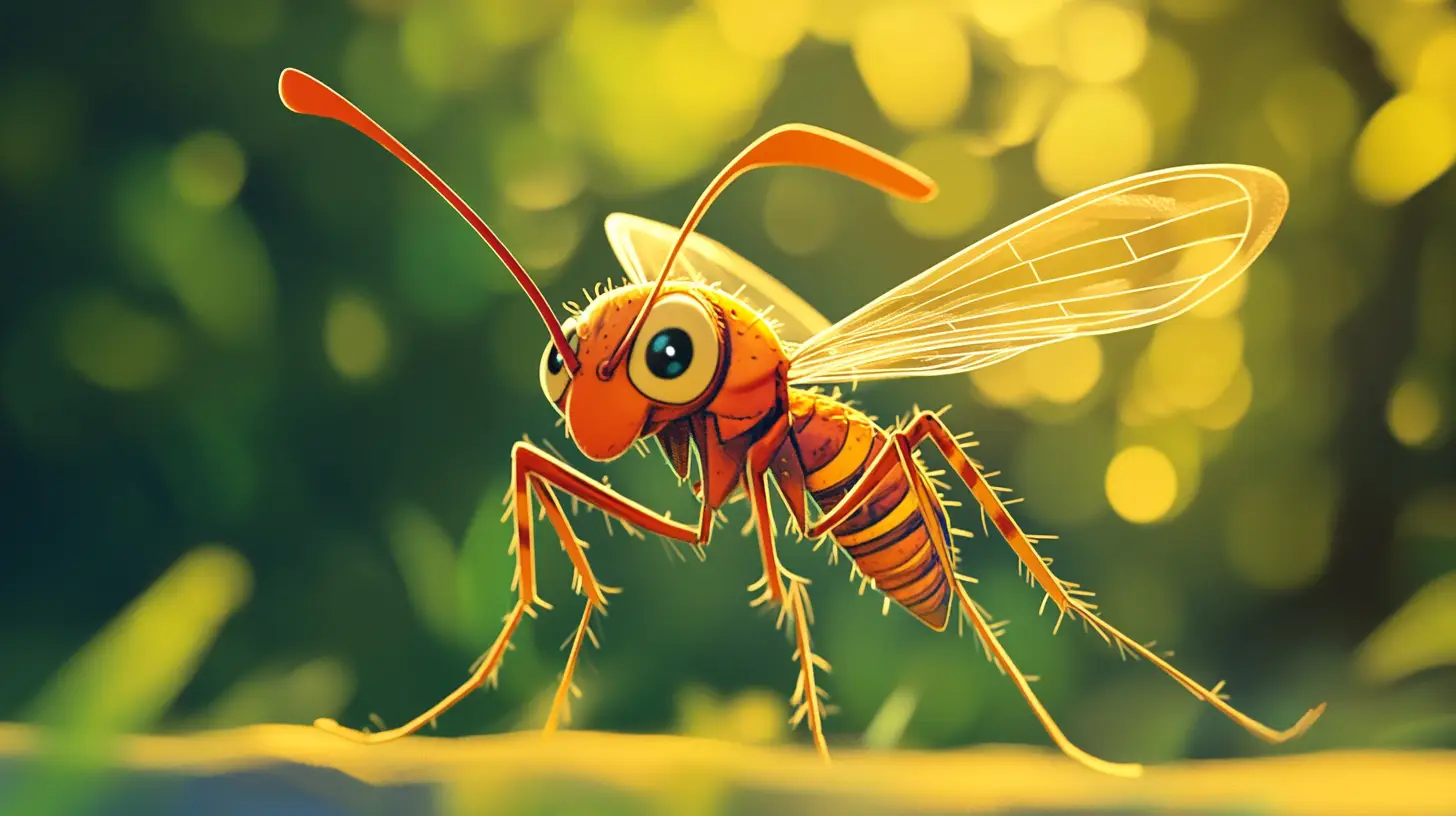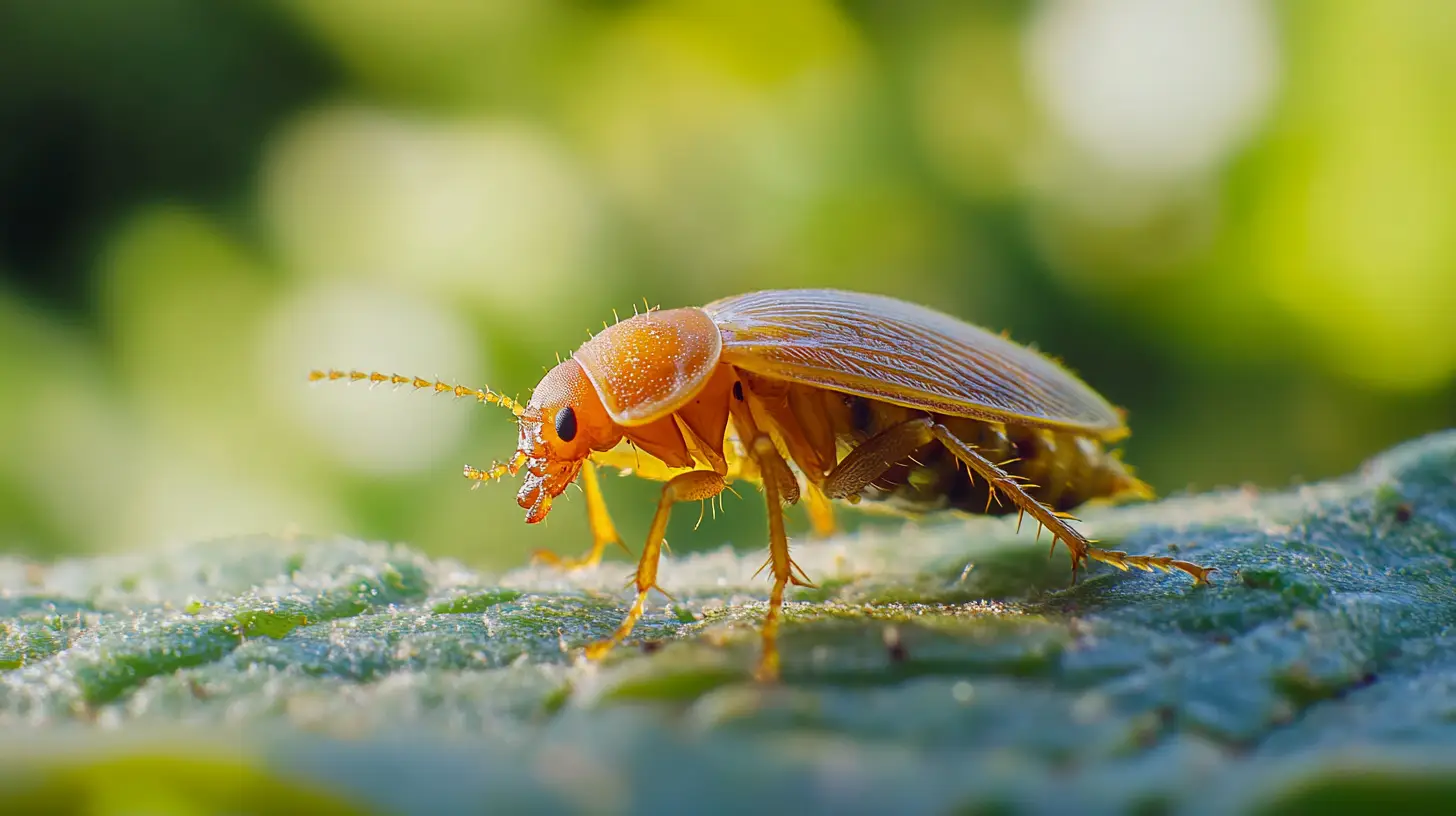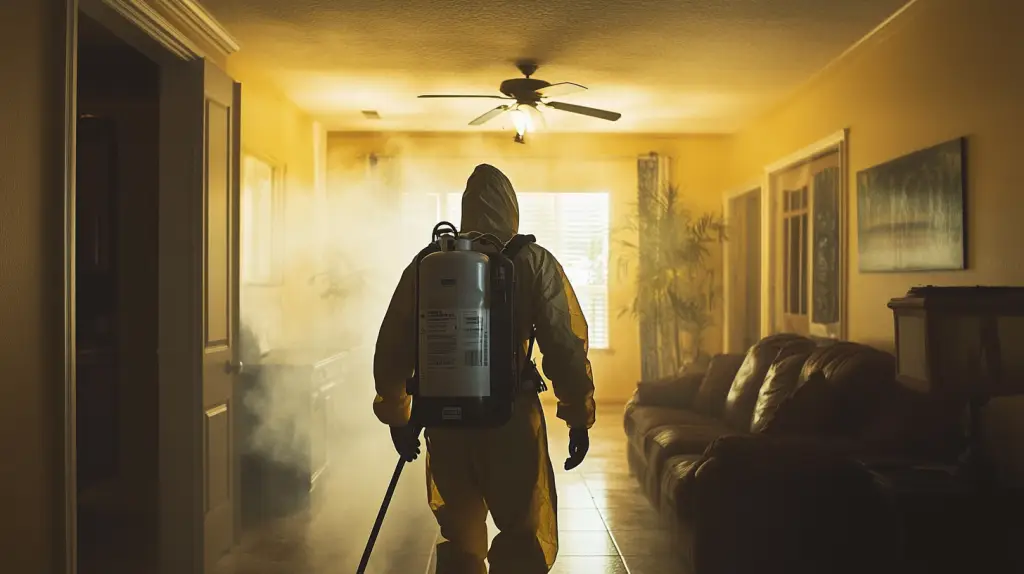
Table of Contents
TVOC levels might sound like some obscure science thing you’d never need to worry about, but if you’ve ever had pest control done and wondered about that weird chemical smell lingering in your house afterward, you’re actually dealing with exactly what TVOC measures.
Here’s the thing about living in Lakewood Ranch: we all want our homes to look perfect (hello, HOA standards), but we also want them to be safe for our families. When you’re dealing with Florida’s year-round pest pressure – from palmetto bugs to fire ants to whatever else decides your house looks like a great vacation spot – pest control becomes pretty much inevitable.
But those chemical treatments that keep the bugs away? They can temporarily turn your indoor air into something you probably don’t want to be breathing. Understanding TVOC levels helps you know when your air is safe again and when you need to crack some windows and wait it out.
Key Takeaways
- TVOC spikes are normal but temporary. Chemical pest control treatments will raise VOC levels, but proper ventilation can bring them back down to safe ranges within hours.
- The 2-4 hour rule is your friend. Stay out of treated areas for at least this long, longer if you can still smell chemicals. Your nose is actually a pretty good VOC detector.
- Ventilation is everything. Air movement is your best defense against elevated TVOC levels. Use every fan you have and open windows when weather permits.
- Timing matters for Florida homes. Schedule treatments when you can maximize ventilation time, considering our climate limitations like humidity and storm season.
- Know your family’s risk factors. Kids, elderly family members, and anyone with respiratory issues need extra protection from elevated VOC exposure.
- Humidity makes it worse. Keep your AC running and humidity low to reduce the rate at which chemicals off-gas into your air.
Smart pest control isn’t just about killing bugs – it’s about protecting your family’s health while keeping your home pest-free. A little planning makes all the difference.
What the Heck is TVOC Anyway?
TVOC stands for Total Volatile Organic Compounds, which sounds scarier than it needs to. Think of it as a measurement of all the chemicals floating around in your air that can evaporate at room temperature.
These compounds are everywhere – in cleaning products, paint, new furniture, air fresheners, and yes, pest control chemicals. Your house probably has some level of VOCs all the time, but pest control treatments can spike those numbers temporarily.
The “volatile” part just means these chemicals evaporate easily, which is why you can smell them. If you can smell that lingering pesticide odor after treatment, you’re literally breathing in VOCs.
The Numbers That Actually Matter for Your Family
Here’s where it gets practical. TVOC levels are measured in milligrams per cubic meter (mg/m³), and here’s what those numbers mean for your Lakewood Ranch home:
- Below 0.3 mg/m³: You’re golden. This is the baseline you want to get back to after any pest control treatment.
- 0.3-0.5 mg/m³: Still acceptable, but you’ll want to keep an eye on things and maybe boost ventilation.
- 0.5-1 mg/m³: Getting into the danger zone. This is where you start seeing health effects, especially for kids and anyone with respiratory issues.
- Above 1 mg/m³: Nope. Time to evacuate and ventilate aggressively.
For context, research in similar housing shows that many homes naturally hover around 0.3-0.5 mg/m³ just from normal household products. After pest control? Those numbers can jump way higher if you’re not careful.
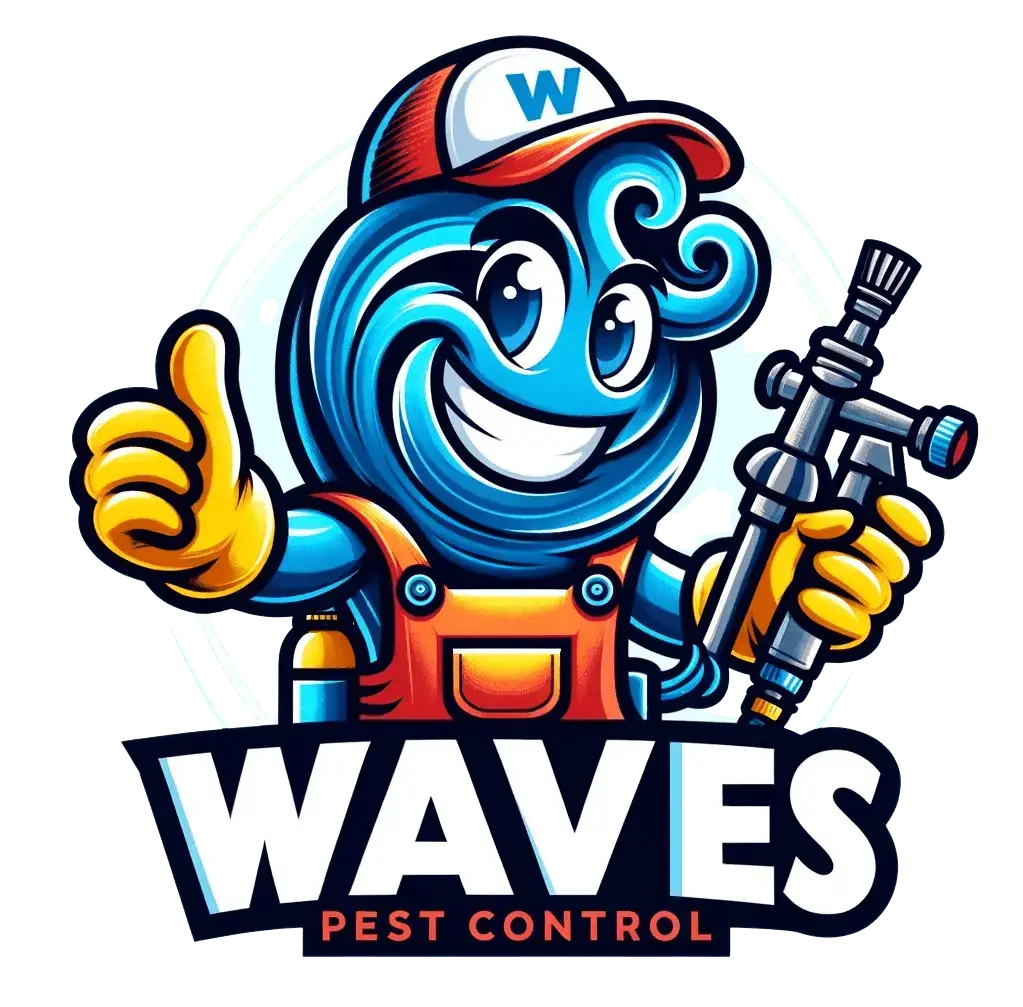
Get Pest-Free Today!
Trust Waves Pest Control for expert pest solutions in Florida. Call now or request your free quote online!
Request a QuoteWhy Pest Control Sends TVOC Levels Through the Roof
Most pest control treatments use chemical pesticides that are basically VOC cocktails. When your pest control tech sprays around baseboards, in closets, or treats entry points, those chemicals don’t just disappear – they evaporate into your air.
The EPA notes that during and right after activities involving VOC-emitting products, indoor levels can be 1,000 times higher than what you’d find outside. That’s not a typo. One thousand times higher.
This is especially problematic in Lakewood Ranch homes because:
- Our houses are built to be energy efficient (read: sealed tight)
- Florida humidity makes chemicals off-gas faster
- We run AC constantly, which can circulate contaminated air
- Many of us have open floor plans that spread chemical-laden air quickly
The Health Reality Check
High TVOC levels aren’t just about a funky smell. They can cause real health problems, especially for the people in your house who matter most.
- Short-term effects you might notice right away include headaches, dizziness, eye irritation, and that general “I don’t feel great” feeling. Kids often react more quickly than adults.
- Long-term exposure to high levels can damage your liver, kidneys, and nervous system. Some VOCs are known carcinogens, which is exactly as concerning as it sounds.
This isn’t about being paranoid – it’s about being smart. Especially if you have little kids crawling around on treated floors or elderly family members with compromised respiratory systems.
Your Post-Treatment Game Plan for Lakewood Ranch Homes
The good news is that managing TVOC levels after pest control isn’t rocket science. Here’s your action plan:
- Step 1: Get air moving immediately. Open windows and doors if the weather allows (which, let’s be honest, is about six days a year in Florida). Run ceiling fans, bathroom exhaust fans, anything that moves air.
- Step 2: Time your treatments smart. Schedule pest control when you can leave the house for a few hours. Morning treatments work well because you can ventilate during the day and air things out before bedtime.
- Step 3: Boost your AC game. Set your HVAC to “fan on” instead of “auto” to keep air circulating. Change your filter right after treatment to catch any particles.
- Step 4: Use the 2-4 hour rule. Plan to stay out of treated areas for at least 2-4 hours, longer if you smell anything chemical-y.
- Step 5: Consider air purifiers. Units with activated carbon filters can help pull VOCs out of the air faster than waiting for them to dissipate naturally.
Special Considerations for Florida Living
Our climate creates some unique challenges for managing post-treatment air quality:
- Humidity makes everything worse. VOCs off-gas faster in high humidity, which is basically always here. Run your AC and dehumidifiers to keep moisture levels down.
- Hurricane season complications. If you need pest control during storm season when opening windows isn’t an option, plan for longer ventilation periods and maybe invest in that air purifier.
- Year-round treatments. Unlike northern climates where pest control is seasonal, we need regular treatments. That means regular attention to air quality management.
When to Actually Worry (And When You’re Being Paranoid)
Look, we all want to protect our families, but you don’t need to become obsessive about TVOC levels. Here’s when to pay attention:
Red flags that warrant concern:
- Chemical smell that lingers more than 6-8 hours after treatment
- Family members complaining of headaches or feeling “off”
- Pets acting strange or lethargic
- Visible residue or moisture from treatments that isn’t drying
Normal stuff you don’t need to stress about:
- Mild chemical odor for a few hours post-treatment
- Slight smell when you first enter a treated room
- Temporary stuffiness in treated areas
Consider air quality monitoring if:
- You have family members with asthma or respiratory issues
- You’ve had reactions to pest control in the past
- You’re treating large areas or doing whole-house treatments
- You live in a particularly tight, energy-efficient home
The Bottom Line for Lakewood Ranch Families
Nobody wants to choose between keeping bugs out and keeping their family safe. The reality is that with proper ventilation and timing, you can have both.
TVOC spikes after pest control are normal and temporary. The key is not letting those levels stay elevated longer than necessary. Most chemical pesticides will off-gas significantly within the first few hours, and proper ventilation can bring levels back to safe ranges pretty quickly.
Your goal isn’t to achieve zero VOCs (impossible in any modern home), but to get back to baseline levels that won’t affect your family’s health. A little awareness and some strategic fan usage goes a long way.
Frequently Asked Questions (FAQs)
How can I tell if TVOC levels are too high without buying expensive equipment?
Your nose is surprisingly reliable. If you can smell chemical odors hours after treatment, levels are probably elevated. Other signs include headaches, eye irritation, or that “chemical-y” feeling in your throat. When in doubt, increase ventilation and wait longer before re-entering treated areas.
Is it safe to sleep in my house the same night as pest control treatment?
Generally yes, if you’ve properly ventilated for several hours and can’t smell chemicals. Focus ventilation efforts on bedrooms, and consider running an air purifier overnight. If you’re still smelling chemicals at bedtime, consider staying elsewhere or sleeping in an untreated room.
Do “green” or “natural” pest control products eliminate TVOC concerns?
Not necessarily. Even natural products can contain VOCs, though usually at lower levels. Essential oil-based treatments, for example, still off-gas. The advantage is that natural VOCs typically dissipate faster and are less toxic than synthetic chemicals.
Should I be more concerned about TVOC levels in Florida’s humid climate?
Yes, humidity does increase the rate at which chemicals off-gas, potentially raising TVOC levels faster and higher than in drier climates. This is why running your AC and keeping humidity low during and after treatment is so important here.
How long do elevated TVOC levels typically last after pest control?
With proper ventilation, most chemical pesticides will off-gas significantly within 4-8 hours. However, trace amounts might linger for 24-48 hours, especially in areas with poor air circulation. The key is getting levels back down to baseline quickly.
Can TVOC levels affect my pets?
Absolutely. Pets are often more sensitive to VOCs than humans, especially birds and small mammals. Watch for changes in behavior, appetite, or energy levels. Keep pets out of treated areas for the same 2-4 hour minimum, longer if they seem affected.
Should I run my HVAC system during and after pest control treatment?
Run the fan to circulate air, but be strategic about it. If chemicals are being applied, you might want to temporarily turn off the system to avoid drawing fumes into your ductwork. Resume circulation once treatment is complete to help air mix and dilute.
Are children more susceptible to high TVOC levels?
Yes, children are generally more vulnerable because they breathe faster, have smaller body mass, and their developing systems are more sensitive to chemical exposure. Keep kids out of treated areas longer than the minimum recommended time, and watch for any signs of irritation or discomfort.

